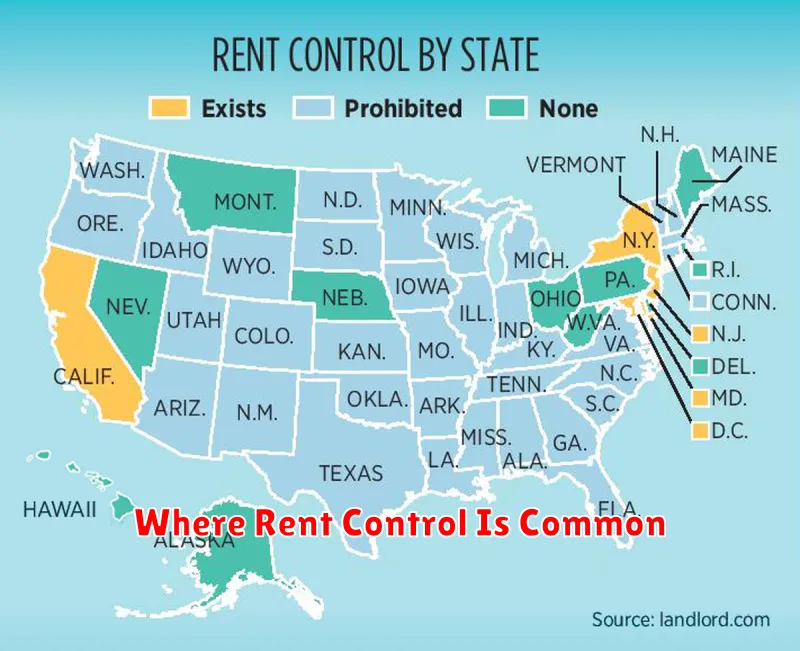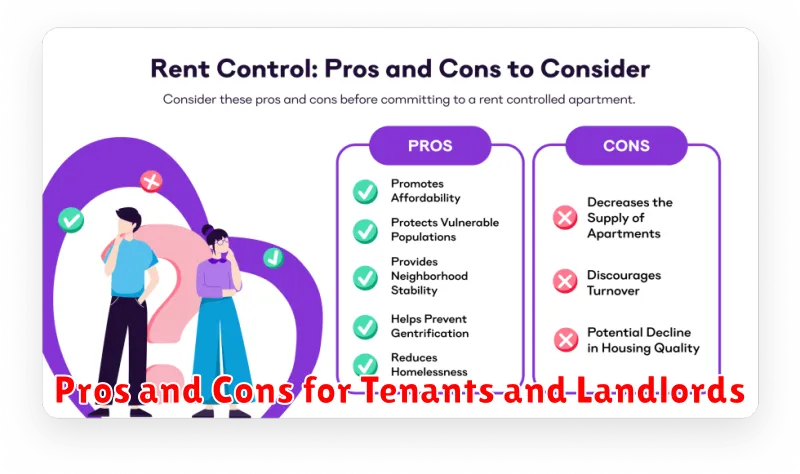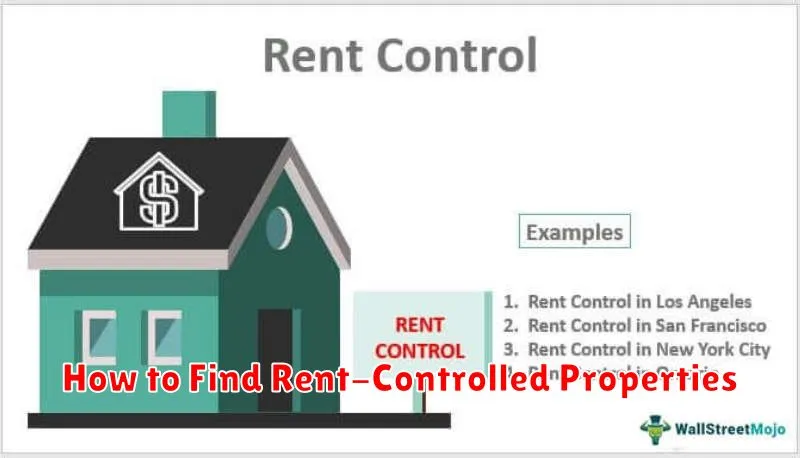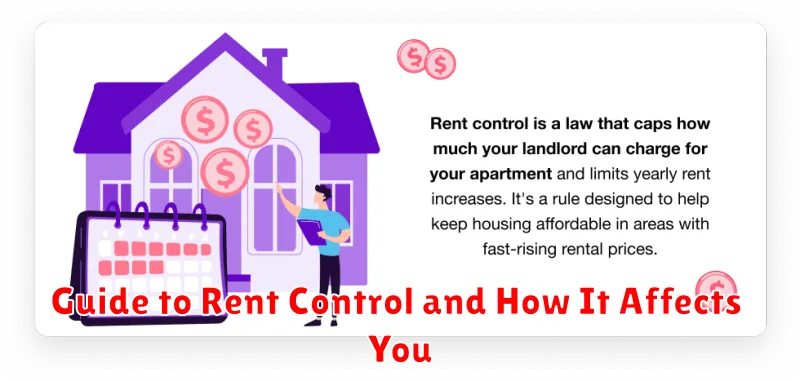Are you a renter struggling to keep up with rising housing costs? Do you want to understand how rent control can impact your living situation? This comprehensive guide explores the intricacies of rent control, explaining what it is, how it works, and the potential benefits and drawbacks it presents to both landlords and tenants. We’ll delve into the specifics of rent stabilization, rent freezes, and other forms of rent regulation to provide a clear understanding of this complex issue. Whether you’re a current renter, a prospective tenant, or a property owner, understanding the nuances of rent control is crucial in today’s housing market.
Navigating the complexities of rent control laws can be challenging. This guide aims to simplify the topic, providing valuable insights into the history of rent control, current rent control policies in different regions, and the potential future of rent regulation. We will examine how rent control affects affordability, housing availability, and the overall rental market. Learn how to determine if rent control applies to your property, understand your rights and responsibilities as a tenant or landlord, and gain a comprehensive understanding of the impact rent control has on your community.
What Is Rent Control?
Rent control is a government regulation that limits how much landlords can increase rent on residential properties. It aims to protect tenants from steep rent hikes, particularly in areas with high housing demand. Rent control ordinances vary significantly across jurisdictions, defining factors like the maximum allowable annual increase, the types of properties covered, and exemptions for new construction or substantial renovations.
While intended to make housing more affordable, rent control can have unintended consequences. Critics argue it can discourage new construction and reduce the quality of existing housing stock, as landlords may have less incentive to invest in maintenance and upgrades when their potential return is limited. Long-term effects can include reduced housing availability, increased competition for controlled units, and potential discrimination by landlords seeking to select tenants who are less likely to remain in the unit for extended periods.
Key aspects of rent control often include:
- Allowable annual increases: Typically tied to a cost-of-living index or a fixed percentage.
- Vacancy control: Whether rent increases are limited between tenancies.
- Exemptions: For new construction, single-family homes, or certain types of rental units.
How Rent Control Laws Work
Rent control laws are designed to limit how much landlords can increase rent on residential properties. These regulations typically set a maximum allowable annual increase, often tied to a measure of inflation like the Consumer Price Index. Some jurisdictions also establish vacancy control, which means the limits apply even when a new tenant moves in. The specific rules vary significantly by location, with some cities having much stricter controls than others. The goal of rent control is to protect tenants from exorbitant rent hikes and maintain housing affordability, particularly for long-term residents.
While aiming to help tenants, rent control laws can have unintended consequences. Critics argue that these regulations can discourage new construction of rental housing and reduce investment in existing properties, leading to a decline in the overall quality and availability of rental units. Some landlords may also try to circumvent rent control through various means, such as offering preferential treatment to higher-paying tenants or converting rental units to other uses.
The complexity of rent control is reflected in the ongoing debate about its effectiveness. Supporters highlight its role in preserving affordable housing for vulnerable populations, while opponents emphasize the potential negative impacts on the housing market. The effectiveness and desirability of rent control remain a subject of ongoing research and discussion, varying greatly depending on local market conditions and the specific details of the implemented regulations.
Where Rent Control Is Common

Rent control, which limits how much landlords can increase rent, is more common in certain areas than others. Typically, it’s found in cities with high housing costs and limited housing supply, where renters are particularly vulnerable to steep rent hikes. These often include large, coastal metropolitan areas in states like California, New York, and New Jersey. Additionally, some smaller cities with historically tight housing markets also employ some form of rent stabilization.
Specifically, within California, cities like Los Angeles, San Francisco, Oakland, and San Jose have rent control ordinances. New York City has a long-standing and complex system of rent regulation. Other cities across the country, such as Washington D.C. and Oregon, have implemented statewide forms of rent control.
It’s important to note that the specific regulations vary considerably from place to place. Some laws limit rent increases annually, while others tie increases to inflation or other economic indicators. The scope of properties covered by rent control also differs, with some regulations applying to all rental units and others applying only to buildings constructed before a certain date or those with a specified number of units.
Pros and Cons for Tenants and Landlords

For Tenants: Pros include flexibility (easier to move), lower upfront costs (no down payment, property taxes, or major repairs), and predictable monthly expenses. Cons include limited control over the property (no renovations without permission), rent increases, and the possibility of eviction. Renters also build no equity and may face restrictions on pets or other lifestyle choices.
For Landlords: Pros are a source of passive income, property appreciation over time, and tax deductions for expenses related to the property. Cons include the responsibility for property maintenance and repairs, potential vacancy periods with no income, and dealing with difficult tenants. Landlords also face the risk of property damage and legal disputes.
Ultimately, the best choice between renting and owning depends on individual circumstances, financial situation, and lifestyle preferences. Careful consideration of these factors is essential for making an informed decision.
How to Find Rent-Controlled Properties

Finding a rent-controlled apartment can be challenging, as they are often highly sought after. Rent control laws vary significantly by location, with some cities having stricter regulations than others. Begin your search by researching the specific rent control ordinances in your target area. Local government websites, housing advocacy groups, and tenant unions can provide valuable information about which areas have rent control and the specific regulations in place. Understanding the local laws is crucial for a successful search.
Once you’ve identified areas with rent control, networking can be a powerful tool. Reach out to friends, family, and colleagues who live in the area, as rent-controlled units are often passed down through word-of-mouth. Attend community meetings and connect with local residents. Consider joining neighborhood Facebook groups or online forums. Persistence and proactive communication are key to uncovering these often hidden gems.
While online listings may occasionally advertise rent-controlled units, don’t rely solely on these platforms. Working with a local real estate agent specializing in the area can be beneficial. They may have access to off-market listings or insights into upcoming vacancies. Be prepared for a competitive market and be ready to act quickly when a suitable property becomes available. Patience and diligence are essential throughout the search process.
Know Your Rights as a Rent-Controlled Tenant
Rent control ordinances are designed to protect tenants from exorbitant rent increases and arbitrary evictions. As a rent-controlled tenant, you have specific rights guaranteed by law. These rights typically include limitations on how much your landlord can increase your rent each year. These increases are often tied to a specific index or percentage set by the local government. Understanding these limits is crucial to ensuring you’re not being overcharged. You also have the right to a habitable dwelling, meaning your landlord is responsible for maintaining a safe and livable space, including providing necessary repairs and addressing habitability issues. Furthermore, evictions in rent-controlled units are often strictly regulated, requiring just cause, and providing tenants with legal recourse if they believe their eviction is unlawful. It’s essential to familiarize yourself with your local rent control laws, which may offer additional protections beyond these general principles.
Your local government or housing authority is the best resource for specific information regarding your rights as a rent-controlled tenant. These agencies can provide details about allowable rent increases, required notices for rent hikes or evictions, and the process for filing complaints. Many cities and counties offer resources like tenant handbooks, workshops, and legal aid services to assist rent-controlled tenants. Don’t hesitate to reach out to these resources if you have questions or concerns regarding your tenancy. Documentation is also vital. Keep records of all communication with your landlord, rent payments, and any maintenance requests. This documentation can serve as valuable evidence if a dispute arises.
Remember, understanding your rights is the first step in protecting yourself. Proactive engagement with your local housing authorities and thorough documentation are key to ensuring your rights as a rent-controlled tenant are respected. If you believe your landlord is violating your rights, seek legal advice immediately. Many legal aid organizations specialize in tenant rights and can offer guidance and representation.
The Future of Rent Regulation
Rent regulation, a system implemented to control rent increases and tenant evictions, faces an uncertain future. Housing affordability remains a critical issue in many urban areas, and proponents argue that rent regulation is a vital tool for protecting vulnerable tenants from displacement and ensuring housing stability. Opponents, however, contend that rent control can stifle new construction, discourage investment in existing properties, and ultimately exacerbate housing shortages. Policymakers are grappling with these competing interests, seeking solutions that address affordability concerns without negatively impacting housing supply.
Several factors are shaping the future of rent regulation. Changing demographics, including urbanization and population growth, are increasing demand for housing in many areas. Economic conditions, such as inflation and rising construction costs, also play a significant role. Furthermore, technological advancements, like online rental platforms and data analytics, are transforming the rental market, presenting new challenges and opportunities for regulators.
Moving forward, the evolution of rent regulation will likely involve a combination of approaches. These may include: exploring alternative models like inclusionary zoning, which incentivizes developers to build affordable units; implementing targeted rent subsidies or vouchers to address specific needs; and leveraging technology to improve market transparency and efficiency. Finding a sustainable path forward requires careful consideration of the complex interplay between housing affordability, market dynamics, and the overall health of the housing sector.

